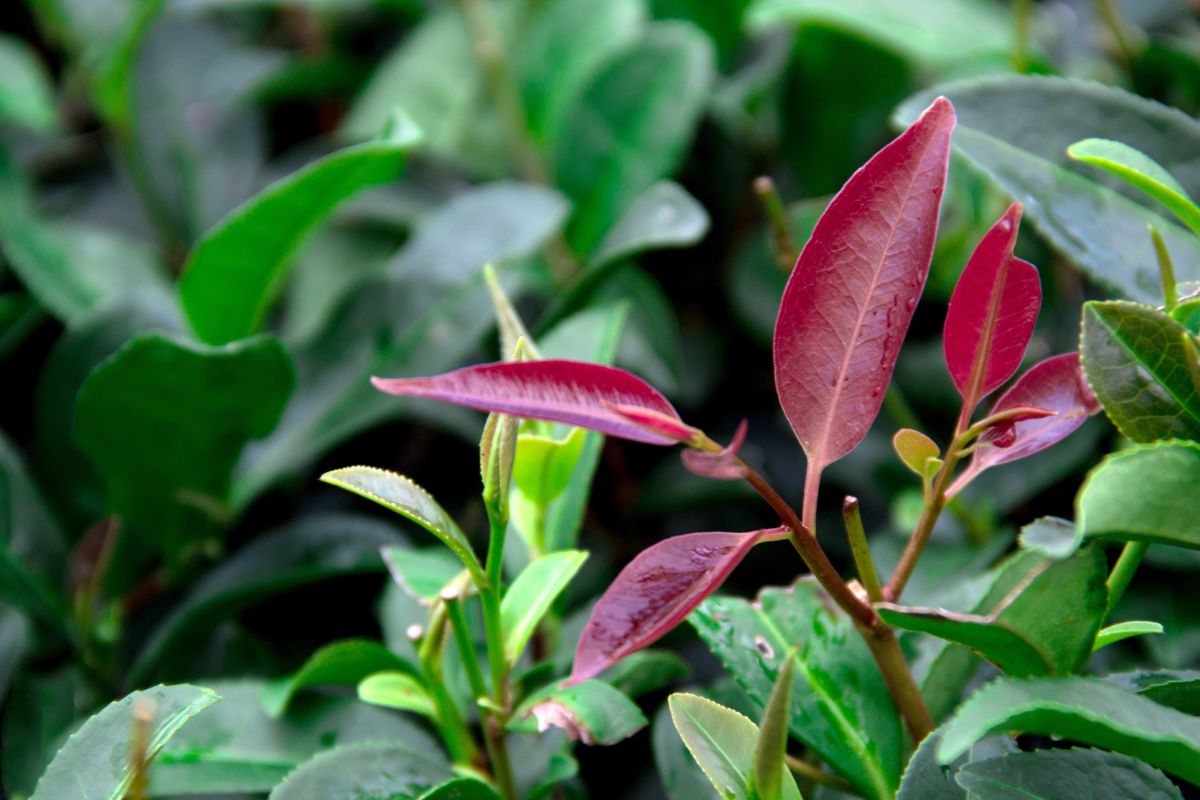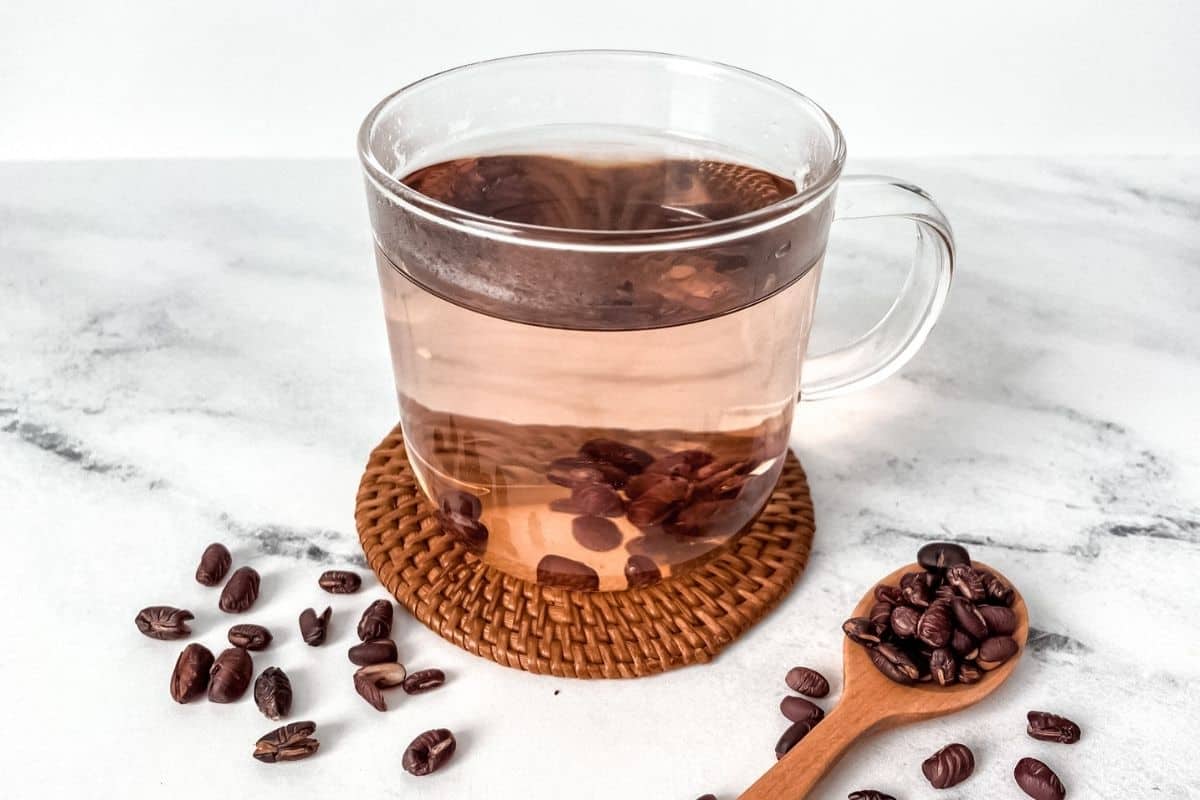A Beginner’s Guide To Tea
The most common tea questions (when you are new to it) answered

Did you know that tea is the world’s second most popular drink (right after water)?
But at the same time, there is so much to tea, that sometimes it might seem too complicated.
For example, you may what’s the difference between its many sorts…
Or maybe you just want to know the basics to prepare tea properly…
If that’s you, you’ve come to the right place!
In this -to-understand article you will learn all these basic questions about tea so that you can truly ENJOY it from the beginning!
What is tea?

The word “tea” is often used to designate any type of drink that is made by infusing a plant in water, but strictly speaking, in the tea world, “tea” refers only to brewed from leaves of the Camellia sinensis plant.
Types of tea

So, while generally speaking there are three categories of “tea”, only the third category in the list below (real tea) is truly tea:
- herbal tea (tisane)
- flavored teas (blends)
- real teas (from Camellia sinensis)
Here is what you can expect from each group:
Herbal tea
Herbal tea is the name for everything that is made without real tea plant.
Popular examples are mint tea or chamomile. Rooibos tea or mate are also herbal tea.
Herbal tea can be made from leaves, roots, flowers and other parts of plants that aren’t Camellia sinensis.
So, these “teas” aren’t real tea but tisanes.
Related

Flavored teas
This category goes for any kind of combination of true tea with spices, herbs, flowers, fruits or any other kind of flavoring that add nuances to the teas.
Earl Grey (black tea with bergamot oil) and chai (black tea with masala spices) are examples of well-known flavored tea blends.
Real tea
All kind of tea that come from the leaves of Camellia sinensis is real tea.
Most lists say there are 5 types of real tea; 6 when counting yellow tea (which is quite rare out of China):
- white tea
- green tea
- yellow tea
- oolong
- black tea
- pu-ehr
There is a seventh type of tea known as purple tea, which is also prepared from the same plant but has purple leaves due to a genetic mutation.
All these tea types are made with the same plant (Camellia sinensis): the difference between them (for example, between green tea and black tea) lies in how the the tea leaves are processed.
Questions about a specific type of tea? This cheat sheet come in handy!:
What’s the difference between green und black tea?
One of the most common questions when people want to begin drinking tea is which one to choose: green or black tea.
As we just mentioned, both are made from the same plant (Camellia Sinensis).
But black tea get a treatment (oxidation) so it gets a different look, flavor, and other characteristics than green tea.
The result is that while both are share antioxidant properties and caffeine, they taste different:
- black tea usually taste more robust and “strong”
- green tea has a more “vegetal” and raw taste
That’s why green tea is usually served as is (without milk nor sugar), while black tea is commonly drunk with milk and sugar or with a drops of lemon juice.
Regarding nutritional benefits, all tea types are known for being healthy, but non-oxidized varieties (white and green tea) appear to have more of antioxidant effects than oxidized ones like black tea.
This might be why there is more research on green tea than other types of tea though.
Further info for curious minds
What exactly makes green tea and black tea different? A word about Oxidation

The most determinant procedure in tea processing is called oxidation, and it includes the drying, rolling, and heating of the leaves.
This transforms the green tea leaf into a variety of shades of green to brown and black:
- Black teas are fully oxidized, turning the leaves black and raising the caffeine content.
- Green and white teas are not oxidized. This means, they are the less processed tea types, keeping more of tea’s original flavor and antioxidant levels.
- Oolong tea get an oxidation level between that of green and black tea. Yellow tea (quite uncommon outside of China) is also partially oxidized.
- Pu-erh tea is processed in a similar way as green tea. The difference is that once dry, pu-ehr is fermented and aged for several months (sometimes even years in the case of raw pu-ehr).
How much caffeine is in tea?

The amount of caffeine in tea varies considerably depending on its origin, type, quality, time of harvest and preparation.
As general rules:
- The longer and hotter you steep your tea, the more caffeine it will contain.
- Tea prepared from tea bags usually contains more caffeine than infusion made with loose tea (the reason, the smaller the tea pieces, the more caffeine they release during steeping; teabags include crushed pieces of smaller-sized tea leaves).
- Black tea contains more caffeine than green tea
Is the caffeine in tea good for you?
There are claims that some of the antioxidants in the tea slow down the body’s absorption of its caffeine, but I wasn’t able to find data from studies that support this, so it might be advisable to see the caffeine in the tea in the same way as you would see it in other sources.
That said, the combination of caffeine and L-Theanine (a tea component found it larger quantities in green tea) may have particularly strong benefits in enhancing brain function.
Which has more caffeine, tea or coffee?
Did you know that coffee beans have a caffeine concentration of 1–2%, whereas tea leaves contain 3.5%?
These numbers may lead you to the assumption that tea has more caffeine than coffee, but the coffee brewing process involves hotter water, extracting more caffeine from the beans.
Also, you usually use more coffee beans than tea leaves during the preparation process.
As a result, one cup of coffee generally contains more caffeine than a cup of tea.
Here is a graphic I made to show the amount of caffeine in the most common drinks.
I hope it helps you choose what to drink depending on the time of the day and on how sensitive to caffeine you are:

What is tea good for?

Tea has been enjoyed since ancient times as a health-promoting habit, so many people decide to try tea for it’s nutritional benefits.
Is it, really healthy thought?
Luckily, research on the topic is increasing and it turns out, it’s backing up tea’s good reputation.
Benefits of drinking tea

Disadvantages of drinking tea
Tea is overall a great drink, but like every other food product, it can also bring some disadvantages:
Because of these reasons, it is usually advised that healthy adults do not consume more than 3–4 cups (710–950 ml) of tea each day, although some people may be sensitive to lower doses.
Should I use leaf tea or tea bags?

Tea bags are very convenient and widely available, but tea experts recommend to use loose leaves.
The main reason for this are:
- SIZE OF THE TEA LEAVES
The leaves of loose tea are generally larger than the tea leaves in a regular tea bag.
Most tea bags include smaller or broken tea leaves and tea dust and fannings (small pieces left over from the processing of regular tea).
This has a few disadvantages:- when tea leaves are broken or crushed, they loose some of its essential oils so you won’t be able to enjoy the tea’s flavor and fragrance as much.
- the smaller the tea leaf particles, the faster they loose its freshness
- TEA QUALITY
Loose leaf tea is usually of a higher quality than tea from tea bags.
High-quality teas not only have a better flavor, but they also tend to contain less fluoride. That said, both loose leaf tea and tea bags can be of high or low quality. - SPACE DURING STEEP
Tea leaves need some room to swell and release their flavor.
Loose leaves tea can flow freely in the water and expand, but the space in a tea bag is tight. - PACKAGING
Paper tea bags aren’t only a source of waste; they can also give a “paper” flavor to tea, particularly more delicate types such as white and green tea.
Tea bags vs. pyramids

Pyramid-shaped pouches often offer a good middle point between the quality of loose tea leaves and the practicality of tea bags: they often contain bigger tea leaves and are often of higher quality than tea bags but are as easy to use as teabags.
However, while they are also known as “silk” bags, many of these high-end tea bags are made of plastic mesh, releasing micro plastics into your cup and contributing to environmental burden.
Fortunately, more and more brands are creating such mesh bags with other environmentally friendlier alternatives as wood pulp, cornstarch or cotton.
How to make good tea with teabags

Although we just spoke about how loose tea might be better than tea bags, they are also very practical: they make tea quickly without the need for any equipment (just a cup), and they leave no mess.
So, don’t feel bad if you do prefer teabags.
Luckily, there are some tricks that will allow you to make the best tea as possible even with tea bags:
- Store them properly: to prevent the tea from going stale too soon, keep them away from light and air (for example in an airtight container in a cool, dark area).
- DO – dunk (lift up and down) the tea bag.
- DON’T squeeze the bag when removing it.
Also, when buying tea bags, it’s advisable to choose:
- Individually wrapped portions (if you can): this way the tea will be always fresher
- Bigger tea bags: enough space allow the tea to sweet and come into touch with more water, resulting in a more flavorful cup of tea.
Another good idea is to make your own DIY brew bags with empty tea filter bags or re-usable filters: this way you’ll the taste of loose leaf tea with the convenience of tea bags!
How to make tea the right way (hot)
Every tea lover has its opinion about how to make the perfect cup of tea, whether it’s how long to steep it or when (if) to add milk.
But there are a few things that everyone agrees on:
What you need

Tea
- Better tea leaves produce superior tea. Loose leaves are commonly the finest option. A tea pyramid is the second greatest alternative, while a tea bag is usually the last choice.
- As a general guideline, use 1 tea bag or 1 teaspoon (2 g) of loose tea per cup (6 oz. of water).
Water
As with any ingredient, the better the water, the better your tea will taste.
For some people, this may imply using filtered water, but regular tap water also works.
The important thing is to make sure you use freshly drawn room temperature water, not reboiled one. This is because over-boiling or re-boiling reduce the amount of oxygen in the water, making the tea taste flabby.
The tools (actually only a couple)
Tea lovers have their pick of favorite utensils, ranging from the material of the kettle to the type of pot to the cup or strainer.
However, this is mostly a matter of personal taste.
Personally, I prefer things simple, so my must-haves are only:
- Tea kettle or water boiler – an electric kettle saves time and energy
- A tea strainer or big tea infuser* – you can steep your tea in the cup (or teapot) and then strain it with a tea strainer or use a tea infuser (a tools that holds the tea).
If using a tea infuser, be sure it’s a large one so it gives the tea leaves enough space to expand and let the most amount of water to swirl around them.
Also, bigger strainers are easier to wash than smaller infusers.
*If you are using a teabag, you won’t need a strainer or a tea infuser.
MY PICKS:
This is the exact pot with large tea infuser that I use: I love its functionality (the infuser is so big and easy to clean!) and its elegant, simple design.
When I only want a cup for myself, I use a mug with infuser similar to this one.
water temperature and steeping time
Steeping your tea at the right temperature and time is one of the most important things to get good results.
Each tea type calls for different water temperature and steeping time, so in case of doubt, the best thing might be to follow the package instructions.
But this cheat sheet has the general guidelines that go well most of the time:

Related: How to cold brew green tea
How to make a proper cup of tea (step by step)
Time needed: 10 minutes
Steps to make a good cup of tea
- Bring water to a boil
Use fresh water and avoid heating the water in a microwave, since it may produce unevenly hot water, making your tea taste bitter and unpleasant.
Every type of tea calls for a different water temperature and this is very important to get good results.
For example, when making black tea, you may pour the freshly boiled water over the tea as soon as it reaches boiling.
Other types of tea may need letting the water cool down before steeping (or not heating it until boiling point).
Here you have a chart with the recommended water temperature for each type of tea.
- Warm teapot or cup (optional)
This isn’t essential, but it will bring your teatime to the next level.
To warm the teapot (or cup, if you are making your tea in a cup), simply rinse them with hot water: fill half of the teapot or cup with some of the heated water.
Give hot water a few swirls and then discard it.
- Cover tea and steep
Place the tea in the mug or in the teapot.
Steeping time is as crucial as water temperature, but there is no fixed answer: this also depends on the type of tea (here is a cheat sheet for steeping time).
If you leave the tea in water after the steep time is over (oversteeping), the tea won’t get a more intense flavor but a too bitter taste that will make it difficult to appreciate the tea’s nuances.
- Remove tea
Removing the tea after the recommended steep time stops the brewing process while you wait the tea to cool to a pleasant temperature.
Don’t squeeze the tea leaves or tea bag, since this will release extra tannins, which gives your tea an astringent taste.
- Serve and enjoy
Adding milk and/or sweetener is a matter of personal taste.
Some teas that match specially well with a little added sweetness or creaminess are black tea, blends (as chai, earl grey and lady grey), matcha and roasted green tea (hojicha).
Video showing how to make tea properly
In this 2´40´´ video you can see an example on how to make tea, both using loose leaf tea, tea bags, a tea pot or tea bags:
FAQs about making tea
What are the best tea types for beginners?
By now you might have realized there are so many varieties of tea and tisanes, it almost feel daunting to pick one!
But don’t worry, here I’ve picked some suggestions on how to choose tea that suits your preferences:

How to make a hot cup of tea
Equipment
- Water cooker Optional but recommended
- Teaspoon To measure tea – only in case you don’t use tea bags
- Mug with tea infuser and lid Alternatively: a regular mug and a tea strainer (or tea bag)
Ingredients
- 1 tsp. loose tea or a teabag
- 1 Cup water
Instructions
- Bring freshly taped water* to a boil**.

- Optional – Warm the cup for better results by rinsing it with hot water and then discharging this water.

- Place the tea in the cup. Add the freshly heated water.Let the tea steep. Optionally, cover.

- Remove tea after steeping time** is over.

- Add milk and/sugar if desired and enjoy.

Video
Notes
**Water temperature and steeping time vary depending on the tea type. Use this chart as a general guideline (here for a bigger image):

Nutrition
I hope this article has helped you decide which type of tea is best for you and how to make the most out of your experience with it.
For other to-the-point guides about tea, check this post on Matcha for Beginners or this alphabetical guide with different types of tea.
Happy sipping!









I love Rooibos, and I’m relieved it doesn’t have any caffeine in it. Thank you for providing such thorough information about tea.
You are welcome, I am very happy you liked it!